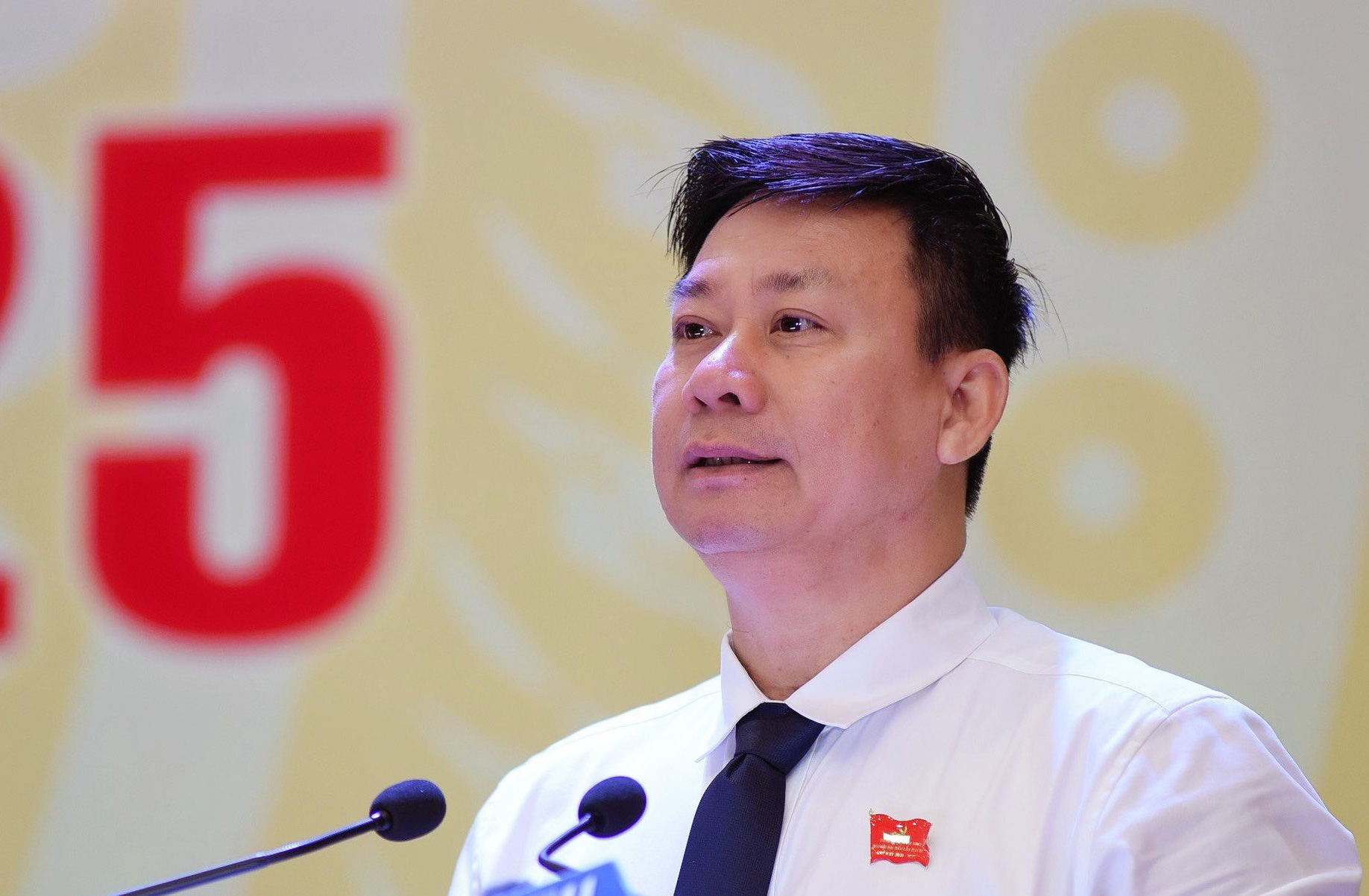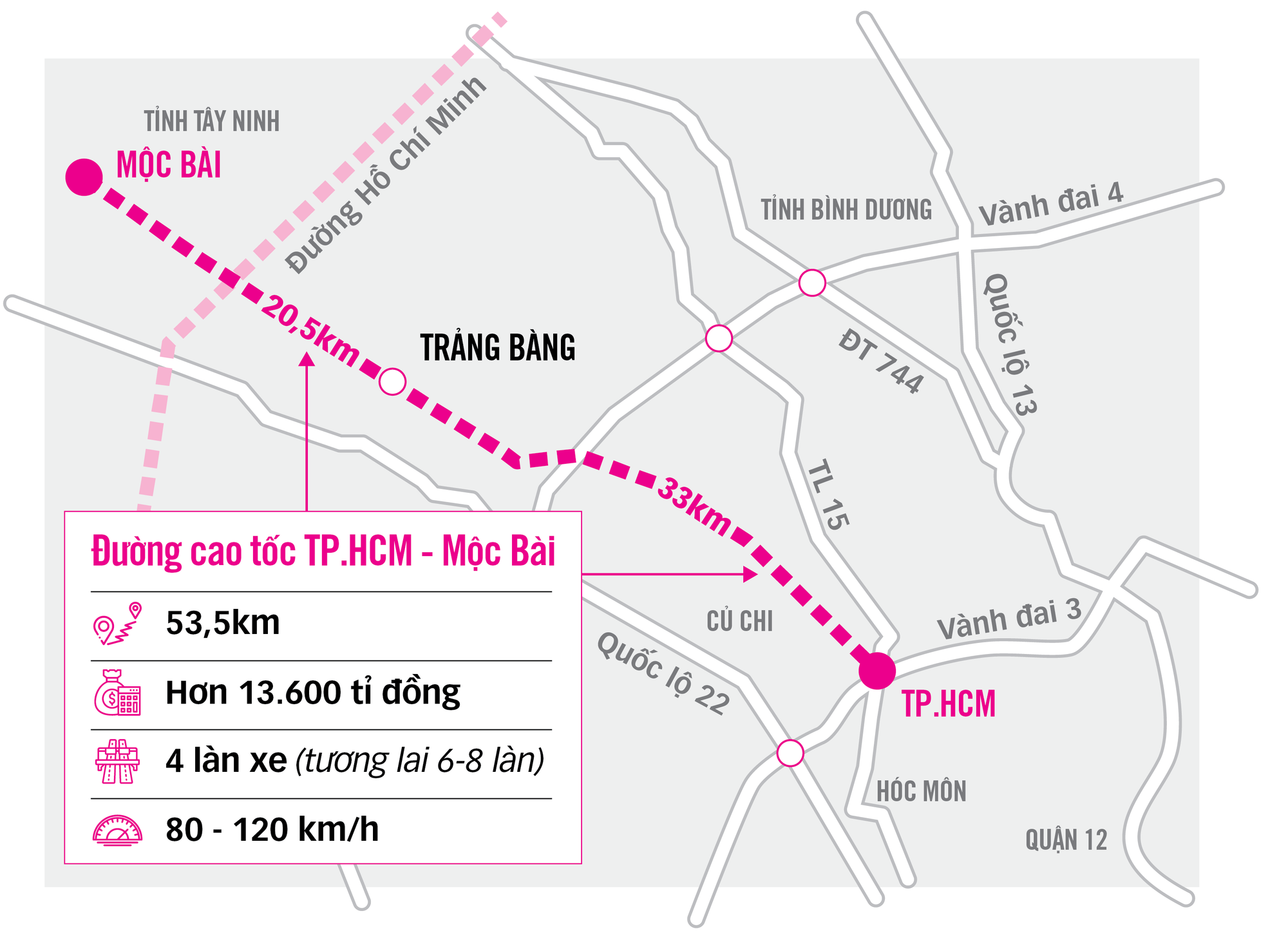The Ho Chi Minh City-Moc Bai Expressway, which connects the southern city and neighboring Tay Ninh Province, will not only boost socio-economic development in the two localities, but also strengthen connectivity in the entire southeastern region.
It is expected to give a 'big boost' to the development of the key economic region in southern Vietnam, Nguyen Thanh Ngoc, chairman of the Tay Ninh People’s Committee, told Tuoi Tre (Youth) newspaper during an interview.
How will the expressway play an essential role in the region if it only links two localities?
Initial research showed that the Ho Chi Minh City-Moc Bai Expressway will intersect Ring Road No. 3 and Ring Road No. 4 in Ho Chi Minh City, which shortens the time for transporting goods in the region and facilitates import-export trade between Vietnam and Cambodia via Moc Bai International Border Gate.
To maximize the project’s efficiency, the Tay Ninh administration is making a proposal to the prime minister, suggesting that the expressway be extended to Xa Mat International Border Gate in the province.
Provincial authorities are also expediting the construction and expansion of other routes connecting Tay Ninh with other southern provinces such as Binh Duong, Binh Phuoc, and Long An.
As the Ho Chi Minh City-Moc Bai Expressway will act as a ‘backbone’ axis, other roads connecting to the expressway will help boost the effectiveness of the project.
|
|
| Nguyen Thanh Ngoc, chairman of the People’s Committee in Tay Ninh Province, Vietnam. Photo: Tuoi Tre |
Which measures will be taken to expedite the implementation of the project given the difficulties in terms of investment procedures and capital?
The prime minister previously agreed to let the Ho Chi Minh City People’s Committee become the representative of state authorities in the implementation of the expressway.
The administrations in Ho Chi Minh City and Tay Ninh Province have also signed a memorandum of understanding (MoU) to coordinate in the implementation of the project.
Competent agencies in Tay Ninh are completing a pre-feasibility report, which will be submitted to the Tay Ninh People’s Committee.
The Tay Ninh administration will then transfer the report to its Ho Chi Minh City counterpart for final approval.
The coordination between the two localities will help shorten administrative procedures, and complete legal procedures for the project in an early manner.
How will we promote the efficiency of a project with such large-scale investment?
If we assess the roles of the Ho Chi Minh City-Moc Bai Expressway in the key southern economic region and the country's external economy, we will understand how necessary it is to carry out the project and take suitable measures to expedite the construction and maximize its efficiency.
Vietnam’s southern provinces currently have more than 1,000 kilometers of border lines. Among them, Tay Ninh has three main border gates and 11 secondary border gates.
Moc Bai is one of the most important border gates in the southern region, as it is essential for export-import activities of the whole region, especially Ho Chi Minh City – an economic locomotive.
The Moc Bai border-gate economic zone was previously launched but did not reach its full potential as expected.
After more than 20 years, we are coordinating with experts to re-evaluate, and make appropriate adjustments to the border economic zone.
The Ho Chi Minh City-Moc Bai Expressway will largely contribute to the development of the economic zone, as it will attract more investors and major projects.
|
|
| A map detailing the Ho Chi Minh City-Moc Bai Expressway. Graphic: Tan Dat / Tuoi Tre |
Do you have any suggestion on how authorities should coordinate to promote projects in the key southern economic region?
Many MoUs have been signed between provinces in key southern economic regions, but they are only bilateral.
It is necessary to establish a locomotive to identify and classify potential in each locality and the region in general.
After that, priorities will be determined and resources will be mobilized to rapidly promote the potentialities of the whole region and the country.
Boosting traffic connectivity in the southeast region
Provinces in southeastern Vietnam have largely contributed to the country’s industrial production value, export turnover, and national budget.
However, the development of the region has yet to match its potential and advantages, and traffic infrastructure is one of the main reasons.
Tuoi Tre has organized a forum on infrastructure connection in the southeastern region since July, which has attracted diverse opinions and contributions from experts, management agencies, readers, and local residents.
On Sunday, Tuoi Tre coordinated with the Vietnam Government Portal, authorities in southern Ria-Vung Tau Province, and the Ho Chi Minh City Institute for Development Studies to organize a seminar on the topic.
The event was attended by 150 guests, including government officials, leaders of southeastern provinces and cities, experts, and businesses.
Preparation for the project
The Ho Chi Minh City and Tay Ninh administrations have been carrying out necessary steps to prepare for the construction of the Ho Chi Minh City-Moc Bai Expressway.
According to the pre-feasibility report, the expressway will run side-by-side with National Highway No. 22, starting from an intersection with Ring Road No. 3 in Ho Chi Minh City and ending at the Moc Bai border gate economic zone in Tay Ninh.
Stretching 53 kilometers, the project will require site clearance of 231 hectares in Tay Ninh and 208 hectares in Ho Chi Minh City, affecting over 570 households.
The capital investment is more than VND13.6 trillion (US$587 million), including VND8.5 trillion ($367 million) for the construction cost and VND5.1 trillion ($220 million) for site clearance.




Max: 1500 characters
There are no comments yet. Be the first to comment.